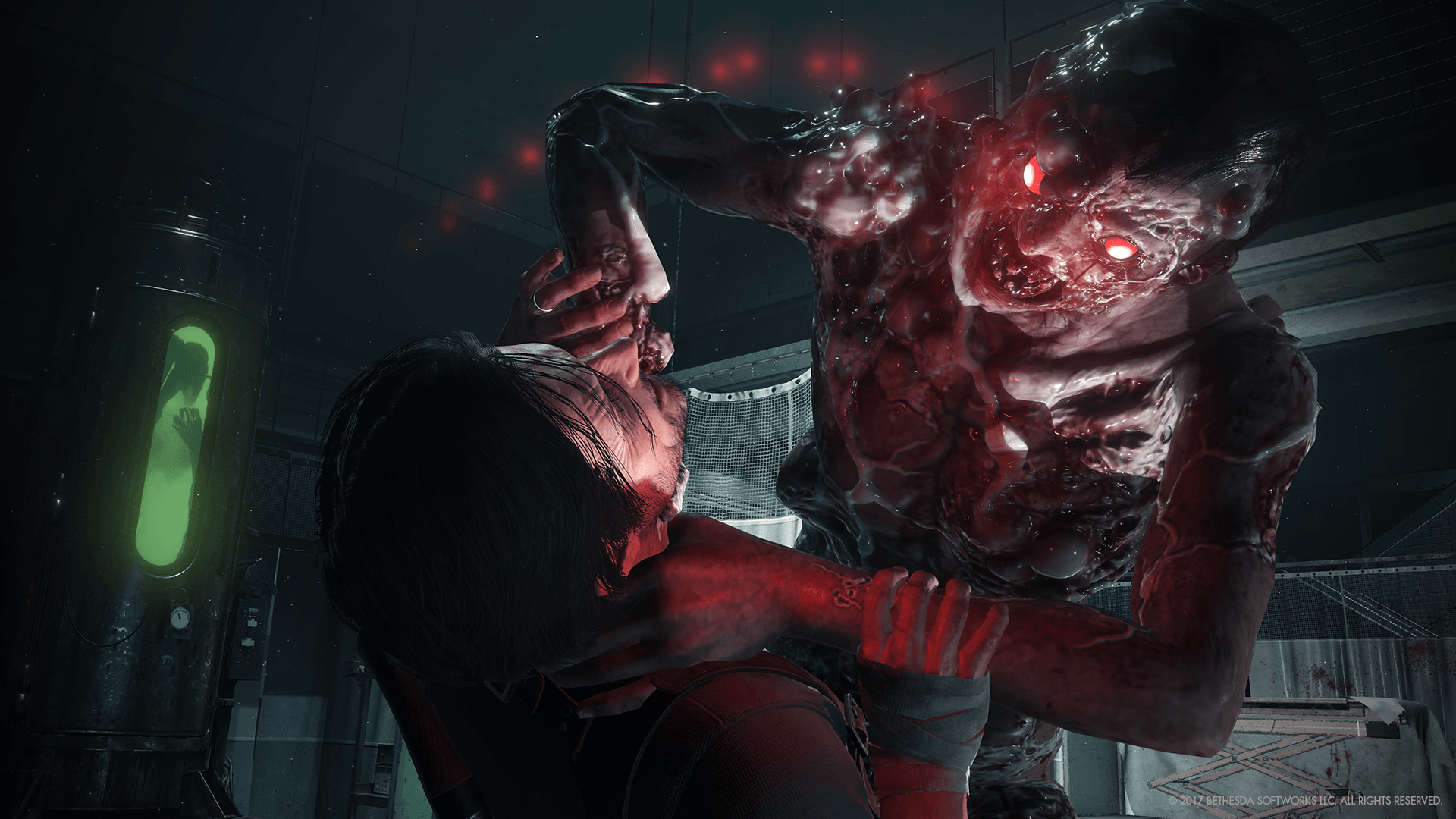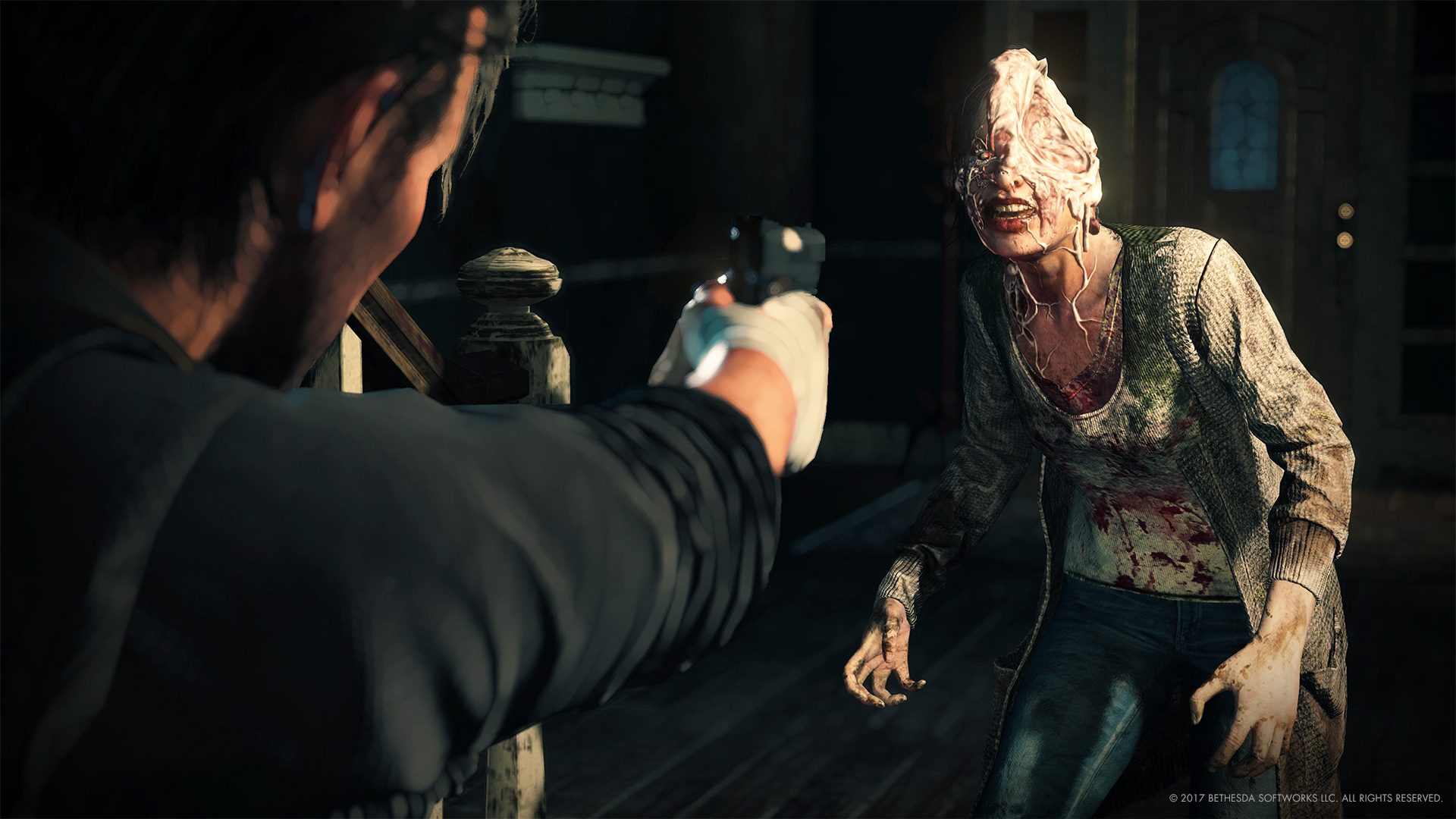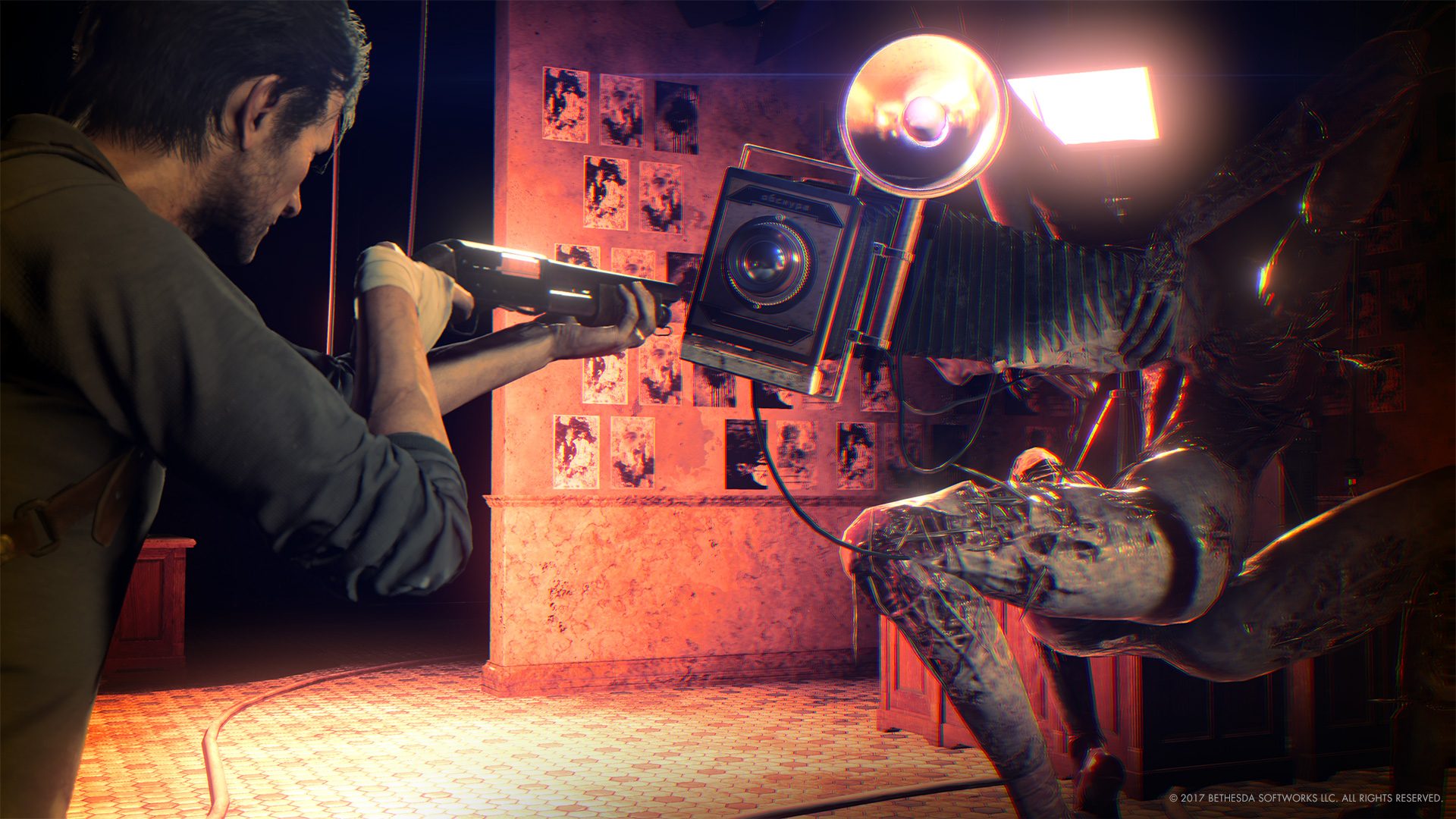SUMMARY
This is AI generated summarization, which may have errors. For context, always refer to the full article.

Six hours into Tango Gamework’s The Evil Within 2 and my knuckles are white-knuckled from clutching my controller and loving the heebie jeebies from the mix of absurd sci-fi premise and fantastic cosmic horror pacing that this game has set.
Most of that is due to how the semi-open world design is a joy to play. I’ve just backtracked through a dark alley in the virtual, Second Life-ish town of Union, confident that I’ve avoided one of the bigger monsters roaming the main street when, all of a sudden, a squad of red-eyed, bubbly-skinned creatures burst from the back of a truck that was closed when I passed it.
Now I am on the backpedal and firing the precious little ammo I have against this sudden attack. That’s one of the high points that this game has: you always need to be on your toes because just when you feel most comfortable.
What a change from the original game’s lukewarm 2014 outing, even if it was directed by Resident Evil’s series creator, Shinji Mikami, nothing particularly shone in that game, I am told.
I bought the sequel on the day of its release (Friday the 13th, this October) to reviews that were mostly great, and some divided on whether this was genius or just a mixed bag.
I can assure you that when this one hits the nail on the head, you feel it reverberate through your hands and on down your spine.
The pacing is superb and, with the aforementioned, almost open-world design of a few of the levels, there is tension and pressure to perform without it being throttling to your style or ramming a difficult puzzle down your throat.
Through it, you can tackle tasks non-linearly. There is a free form-ness to the gameplay that benefits the game for sure, but these tasks are still all connected and are required before you can move on to the next chapter.
The results? Quite a lot of genuine moments of fear, the ambience right on point at the right time, which is not an easy feat for horror gaming, which generally needs to be a linear, closed-circuit kind of experience to be effective.

Continuing the story from the first game, you still play the rough-hewn and tragically suffering (now-ex-cop) Detective Sebastian Castellanos. He’s been down in the dumps and down in the bottle because of the death of his daughter, Lily, a.k.a the results of the first game. The sequel gleefully recaps how it all happened for us, in a harrowing memory about holding Lily as she burns and the fires peel the flesh from her face.
Three years after the first game’s murder investigation gone wrong, we’ve now been told by our former colleague, Juli Kidman, that Lily is indeed alive. The catch is she’s trapped in the virtual STEM world, as well.
That motivation now makes the experience akin to the first Silent Hill, even the search for your missing daughter is here, somehow assimilated and lost in all this sci-fi clusterfuck. Castellanos is forcibly recruited by the shady Mobius tech org and has to go into said haunted, virtual world gone awry where the digital citizens have begun turning into twisted monsters and even bigger, more gory kind of horrors.
Once you enter the construct town of Union, jacking in Matrix style, it is apparent right off the bat that things have gone from something weird in the neighborhood to batshit, chaos crazy in the digital construct that was designed to be as nondescript as Anytown U.S.A .
The story, or the beauty of the game, isn’t really anything to write home about. There are times I laughed out loud at the cut scenes with their info dump sequences and their trying-hard efforts to move the plot forward on a premise as thin and rickety as some of the graphical quirks – a shaky outline and blur function that can be adjusted in the settings, depending on your appetite for irritation.
Character development for Sebastian is in the ballpark of weirdly cheesy lines, awkward dialogue, and comic character interactions. The fact that the game hung my PS4 on me five times over the approximately 20-plus hours of play did not help its case. I was sure I was going to give it a lower score, but then the superb, genius moments of atmosphere rescued it from its downward spiral.
I thoroughly enjoyed this game, you can tell, not only for the aforementioned amazing sense of pacing but for some of the most ingenious and truly disgusting monster design that incorporated into the gameplay.
The weirdly structured first part serves as a nice aperitif to the old school Cronenberg and Argento stylings of the second part. Neither one can stand on its own and the bridge to both is only vague and barely plausibly as an arc. The story is all over the place with its internal logic and architecture but it sure does its job as being a platform for the first-class frights.
The survival horror aspect also contributes nicely to the heightened paranoia. I played the game on its Normal setting (there’s an Easy, then there’s a Survival setting, which is the Normal equivalent), and though the ammo for my weapons were never really in short supply, there was never an abundance of it. In moments when I felt confident that I could go a bit gung ho I still had to keep an eye on my ammo count.
And you do need to explore every inch of the world for supplies. Often, you’ll assess every encounter if the enemy is worth the bullets, you need to constantly be on your back foot for those that, on second look, are too tough for your current resources.

Side quests also abound and are, just like the main missions, tabulated for open task chronology. Sometimes they pay squat, but sometimes they’re truly worth the effort.
While the crafting system is simple and straightforward, the feats and skills trees are nothing to write home about. You can, however, feel the marked improvement with the ability to drop a higher body count comes in the later hours. Same thing with the weapons, they aren’t inventive but the Warden Crossbow and the later ones, like the flamethrower and the silenced handgun, are definite improvements for being spoilt for choice in terms of how to deal with certain situations.
With the bosses, specially, you’ll need to adjust your play style sometimes for heavy sneaking and use of environmental tools, sometimes you just need to go balls to the wall and come out guns blazing as fast as you can, and sometimes you need to endure and keep yourself alive as a time-sensitive event counted down the seconds to your death or escape.
You’ll curse the buzzsaw wielding blob giant with girl’s coalesced faces, shudder at the speed and ferocity of the two-headed creeper, but my favorite (or most feared) garden variety enemy is the weeping and tall apparition that’s a cross between the Sadako girl and a skinny giant; the thing lumbers around clumsily enough on its guarded pacing but runs fast with a big stride when it sees you—it’s also a bitch to kill.
My biggest takeaway from enjoying The Evil Within 2 is how the sound design and the music shine through. They are even functional quite, saving you at times for when hallways and corridors branch. It’s helpful if you have speakers since the stereo setting is very well done and can pinpoint the direction a monster’s moans and screams (or the squamous sound of guts and brains being bashed in) are coming from.
I tell you, when this game is on point, the chills will run down your spine like dozens of creepy crawlies and pretty soon you’re dreading, even with shotgun drawn, what’s behind the next corner.
Atmosphere is king in horror and any aficionado of the genre will tell you that, like the adrenaline of a roller coaster or waking up in the middle of the night with a suspicion of supernatural terror lurking nearby, that emotion is hard to craft but there is no mistaking its rush and texture.
Play this one if you believe, as I do, that “There is no delight the equal of dread.” – Rappler.com
Add a comment
How does this make you feel?
![[In This Economy] A counter-rejoinder in the economic charter change debate](https://www.rappler.com/tachyon/2024/04/TL-counter-rejoinder-apr-20-2024.jpg?resize=257%2C257&crop=267px%2C0px%2C720px%2C720px)
![[Vantage Point] Joey Salceda says 8% GDP growth attainable](https://www.rappler.com/tachyon/2024/04/tl-salceda-gdp-growth-04192024.jpg?resize=257%2C257&crop_strategy=attention)
![[ANALYSIS] A new advocacy in race to financial literacy](https://www.rappler.com/tachyon/2024/04/advocacy-race-financial-literacy-April-19-2024.jpg?resize=257%2C257&crop_strategy=attention)


There are no comments yet. Add your comment to start the conversation.